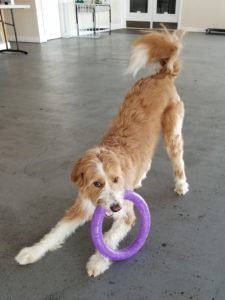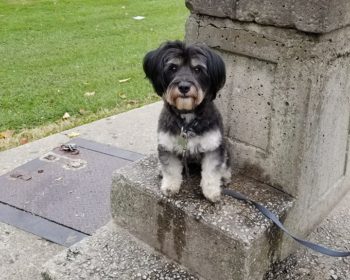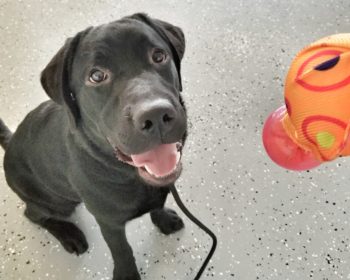The Power of Play
Training your dog isn’t something that happens during a group class or during a walk. You are training your dog ALL THE TIME (whether you know it or not). Every interaction. Every glance. Every game. It’s all training.
So are you training your dog to do something that you WANT? Or are you training him to do something that you DON’T WANT?
Training shouldn’t be drudgery. There’s plenty of room for fun. Let’s take a look at how you can use play to teach better behavior.
I’m sure you’re playing with your dog, anyway. Right?
STARTING THE GAME
One of the most powerful ways we can use play to encourage good behavior is to not allow our dogs to start the game. The human should always initiate the play. The human decides when it’s time to start playing and time to stop playing.
It seems trivial, but if your dog brings you a toy and you play, you are teaching him a pattern of behavior. He is learning that he can demand attention. Sometimes this demanding behavior is no big deal, but what about when you’re on the phone, cooking dinner, or reading a book? Your dog’s instance on playing isn’t so cute anymore. It’s annoying.
When you give your dog the feedback that sometimes it’s OK to demand play but sometimes it’s not, you are confusing him. It’s much clearer to the dog to set a boundary.
“I’m happy to play, but I start the game.”
RULES
 A game is a game because it has rules. Football has a lot of rules. Without the rules, it would just be a bunch of guys pummeling each other for a ball. Similarly, any game you play with your dog should have clear rules.
A game is a game because it has rules. Football has a lot of rules. Without the rules, it would just be a bunch of guys pummeling each other for a ball. Similarly, any game you play with your dog should have clear rules.
For example, here are my rules for tug:
- “Are you ready?” means the game has begun.
- “Drop it” means to spit the toy out.
- Listen for all obedience commands. If you don’t do them, the game won’t continue.
- “Enough” means the game is over.
I don’t think that the game of tug is evil. You hear a lot of trainers advise against tug because so many pet owners don’t teach (or enforce) rules around the game. If tug is purely a game of strength, you could end up with a strong, stubborn dog who now realizes that he’s stronger than you. But if you enforce rules that your dog understands, you can use the game of tug to teach impulse control, build your bond, and burn some energy.
BRAIN WORK
I love to make my dog THINK during our games. One of the truths of dog training: brain work will always make your dog more tired than just physical work. Let’s use the game of fetch for example.
Many dogs can run and run and run while they’re playing fetch, nap for 20 minutes, then bounce off the walls again. So instead of endless running, I interrupt the game with obedience.
Sometimes I say sit, then throw the ball (while she holds the sit), then release her to chase it. (Wow! Talk about impulse control!). Sometimes I have her bring me the ball, run 20 feet away to place, then release and chase the ball when I throw it. Sometimes I throw the ball, then call her to come back BEFORE she reaches the ball. (This is great practice for the day that the ball accidentally bounces into the street!)
The unpredictability is key. Instead of knowing what I’m going to say, my dog has to focus on me and actually pay attention. Those are the rules of the game.
When you play with your dog today, keep these concepts in mind and turn the game into mindful learning.
PS- Is your dog reluctant to give up the toy? Read Teaching “Drop It.”




